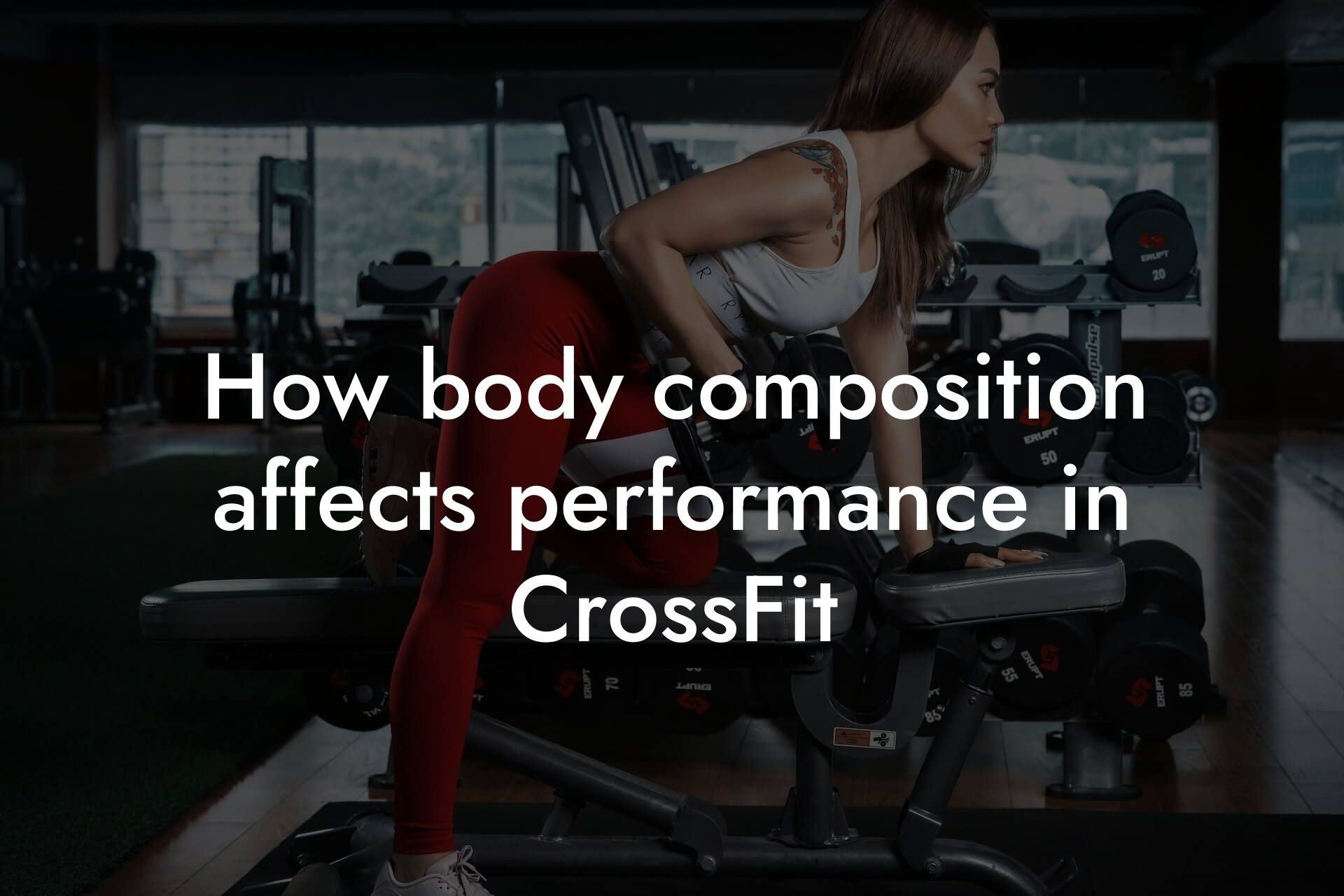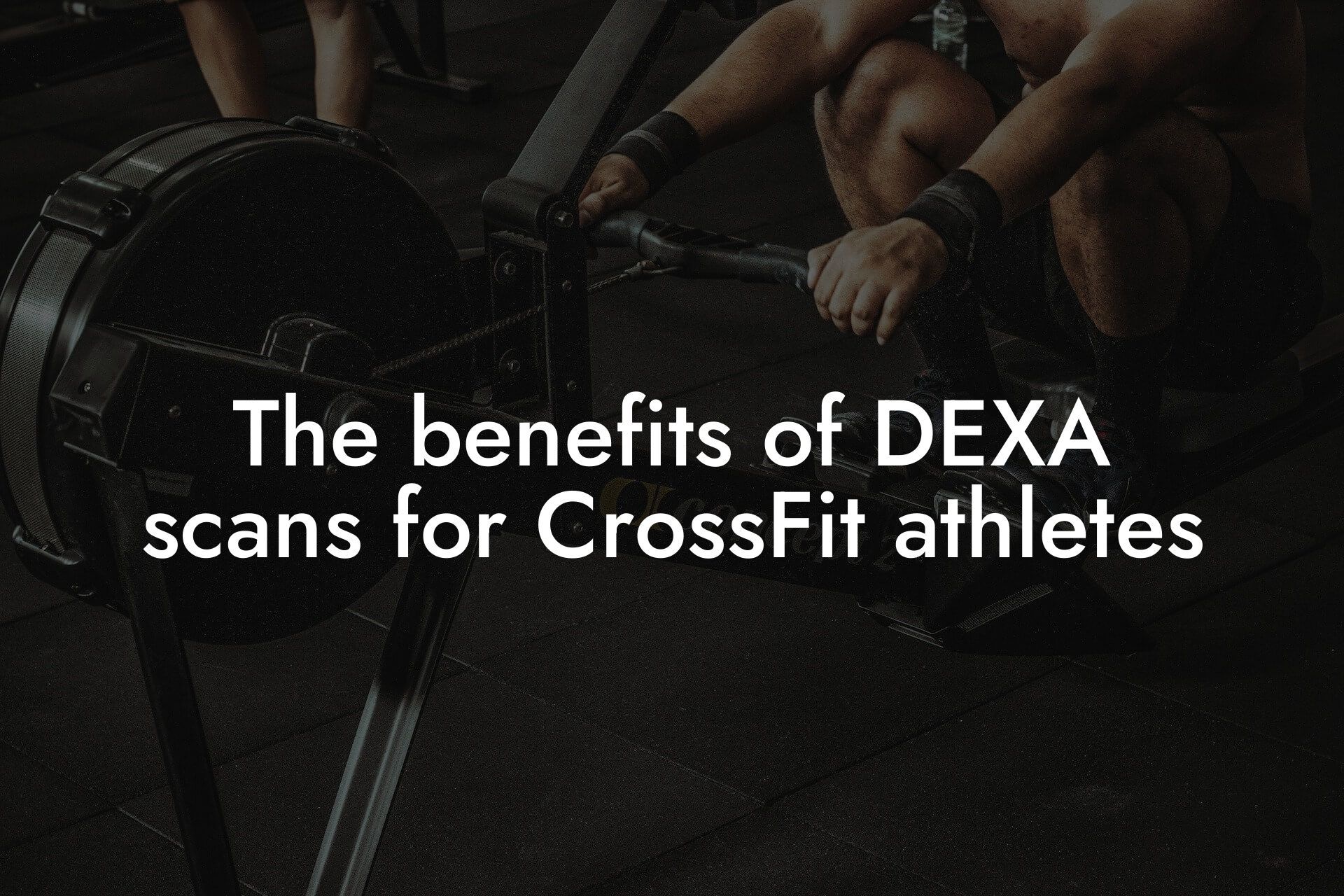As a high-earning professional, you understand the importance of maintaining a strong and healthy physique. CrossFit is an excellent way to challenge yourself and improve your overall fitness, but it requires a well-structured strength and conditioning program to achieve optimal results. In this article, we'll delve into the world of strength and conditioning for CrossFit athletes, providing you with a comprehensive guide to help you take your fitness to the next level.
Table of Contents
- Understanding CrossFit and Its Demands
- Benefits of a Strength and Conditioning Program for CrossFit Athletes
- Components of a Strength and Conditioning Program for CrossFit Athletes
- Periodization and Programming for CrossFit Athletes
- Assessing Progress and Adjusting the Program
- Common Mistakes to Avoid in a Strength and Conditioning Program for CrossFit Athletes
- Frequently Asked Questions
Understanding CrossFit and Its Demands
CrossFit is a high-intensity, functional fitness program that combines various exercises, such as weightlifting, gymnastics, and cardio, to improve overall fitness. It's a demanding sport that requires a strong foundation in strength, power, speed, agility, and endurance. CrossFit workouts, known as WODs (Workouts of the Day), are designed to push athletes to their limits, making it essential to have a well-structured strength and conditioning program to support their training.
Benefits of a Strength and Conditioning Program for CrossFit Athletes
A strength and conditioning program specifically designed for CrossFit athletes can bring numerous benefits, including:
Improved performance: A well-structured program can help increase strength, power, and endurance, leading to better performance in WODs and competitions.
Injury prevention: A strength and conditioning program can help identify and address imbalances and weaknesses, reducing the risk of injury and allowing athletes to train more consistently.
Enhanced recovery: A program that includes conditioning exercises can help improve cardiovascular fitness, reducing fatigue and enhancing recovery between WODs.
Increased confidence: A strength and conditioning program can help athletes develop a sense of confidence and self-assurance, allowing them to tackle challenging WODs with ease.
Components of a Strength and Conditioning Program for CrossFit Athletes
A comprehensive strength and conditioning program for CrossFit athletes should include the following components:
Strength training: This includes exercises such as squats, deadlifts, bench press, and Olympic lifts, designed to improve overall strength and power.
Conditioning exercises: These include cardio exercises such as running, rowing, and jumping rope, as well as high-intensity interval training (HIIT) to improve cardiovascular fitness and endurance.
Power development: Exercises such as box jumps, depth jumps, and medicine ball throws are designed to improve explosive power.
Mobility and flexibility: Incorporating exercises such as yoga, stretching, and mobility drills can help improve range of motion and reduce the risk of injury.
Core strength: Exercises such as planks, side planks, and Russian twists are designed to improve core strength and stability.
Periodization and Programming for CrossFit Athletes
Periodization is a crucial aspect of a strength and conditioning program, as it allows athletes to peak at the right time and avoid plateaus. A well-structured program should include different phases, such as:
Hypertrophy phase: This phase focuses on building muscle mass and strength, typically lasting 4-6 weeks.
Strength phase: This phase focuses on building maximum strength, typically lasting 4-6 weeks.
Power phase: This phase focuses on building explosive power, typically lasting 4-6 weeks.
Conditioning phase: This phase focuses on building cardiovascular fitness and endurance, typically lasting 4-6 weeks.
Active recovery phase: This phase focuses on active recovery and deloading, typically lasting 1-2 weeks.
Assessing Progress and Adjusting the Program
Regular assessments are crucial to track progress and adjust the program accordingly. Some ways to assess progress include:
DEXA scans: These scans provide a detailed analysis of body composition, bone density, and muscle mass, helping athletes track changes over time.
Performance metrics: Tracking performance metrics such as WOD times, weights lifted, and reps completed can help athletes identify areas for improvement.
Subjective feedback: Athletes should regularly provide subjective feedback on how they're feeling, including fatigue levels, soreness, and overall performance.
Common Mistakes to Avoid in a Strength and Conditioning Program for CrossFit Athletes
Some common mistakes to avoid in a strength and conditioning program for CrossFit athletes include:
Insufficient recovery time: Failing to provide adequate recovery time can lead to burnout, injury, and decreased performance.
Inconsistent programming: Failing to follow a consistent program can lead to plateaus and decreased progress.
Inadequate nutrition: Failing to fuel the body with adequate nutrition can lead to decreased performance and recovery.
Ignoring imbalances: Failing to address imbalances and weaknesses can lead to injury and decreased performance.
A well-structured strength and conditioning program is essential for CrossFit athletes looking to improve their performance and achieve their fitness goals. By understanding the demands of CrossFit, incorporating a comprehensive program, and regularly assessing progress, athletes can optimize their training and reach new heights. Remember to avoid common mistakes and prioritize recovery, nutrition, and consistency to ensure long-term success.
At Tano Performance Group, we understand the importance of a comprehensive approach to fitness. Our DEXA scans provide athletes with a detailed analysis of their body composition, bone density, and muscle mass, helping them track changes over time and make informed decisions about their training. Contact us today to learn more about how our services can help you take your fitness to the next level.
Frequently Asked Questions
What is the purpose of a strength and conditioning program for CrossFit athletes?
A well-structured strength and conditioning program is essential for CrossFit athletes to improve their overall performance, increase their strength, power, and endurance, and reduce the risk of injury. A comprehensive program helps athletes develop the necessary skills, strength, and conditioning to excel in their sport and achieve their fitness goals.
What are the key components of a strength and conditioning program for CrossFit athletes?
A effective strength and conditioning program for CrossFit athletes should include a combination of strength training, conditioning exercises, mobility and flexibility work, and recovery techniques. The program should be tailored to the individual athlete's needs, goals, and training experience.
How does strength training benefit CrossFit athletes?
Strength training is a critical component of a CrossFit athlete's training program. It helps improve muscle mass, bone density, and overall strength, which are essential for performing complex movements and exercises. Strength training also enhances power, speed, and endurance, allowing athletes to perform at a higher intensity and recover faster.
What types of conditioning exercises are beneficial for CrossFit athletes?
Conditioning exercises, such as high-intensity interval training (HIIT), aerobic exercises, and plyometric exercises, are essential for improving cardiovascular endurance, increasing anaerobic capacity, and enhancing overall fitness. These exercises help athletes develop the necessary endurance and stamina to perform at a high level during competitions.
Why is mobility and flexibility important for CrossFit athletes?
Mobility and flexibility are critical components of a CrossFit athlete's training program. They help improve range of motion, reduce the risk of injury, and enhance overall athletic performance. Incorporating mobility and flexibility exercises into a training program can also improve recovery and reduce muscle soreness.
How often should CrossFit athletes train?
The training frequency for CrossFit athletes depends on their individual goals, training experience, and recovery needs. Generally, athletes should aim to train 3-5 times per week, with at least one or two rest days in between. This allows for adequate recovery time and helps prevent overtraining and injury.
What is the importance of recovery techniques for CrossFit athletes?
Recovery techniques, such as foam rolling, stretching, and self-myofascial release, are essential for CrossFit athletes to aid in recovery, reduce muscle soreness, and improve overall performance. These techniques help promote blood flow, reduce inflammation, and enhance muscle function.
Can a strength and conditioning program help reduce the risk of injury for CrossFit athletes?
A well-structured strength and conditioning program can help reduce the risk of injury for CrossFit athletes by improving strength, flexibility, and mobility, and enhancing overall athletic performance. A comprehensive program can also identify and address any imbalances or weaknesses that may contribute to injury.
How does nutrition play a role in a strength and conditioning program for CrossFit athletes?
Nutrition is a critical component of a strength and conditioning program for CrossFit athletes. A well-balanced diet that includes adequate protein, complex carbohydrates, and healthy fats is essential for supporting muscle growth, recovery, and overall athletic performance.
What are some common mistakes CrossFit athletes make in their strength and conditioning program?
Common mistakes CrossFit athletes make in their strength and conditioning program include inadequate warm-up and cool-down, poor nutrition, inadequate recovery time, and overtraining. These mistakes can lead to injury, decreased performance, and burnout.
How can a strength and conditioning program help improve body composition for CrossFit athletes?
A well-structured strength and conditioning program can help improve body composition for CrossFit athletes by increasing muscle mass, reducing body fat, and enhancing overall athletic performance. A comprehensive program can also help athletes develop a more athletic physique.
What is the importance of periodization in a strength and conditioning program for CrossFit athletes?
Periodization is a critical component of a strength and conditioning program for CrossFit athletes. It involves varying the intensity, volume, and frequency of training to avoid plateaus, promote continued progress, and enhance overall athletic performance.
Can a strength and conditioning program help improve bone density for CrossFit athletes?
A well-structured strength and conditioning program can help improve bone density for CrossFit athletes by incorporating exercises that promote bone growth, such as weight-bearing exercises and resistance training. This is especially important for athletes who are at risk of osteoporosis or osteopenia.
How does a strength and conditioning program benefit CrossFit athletes in terms of mental toughness?
A comprehensive strength and conditioning program can help CrossFit athletes develop mental toughness by pushing them out of their comfort zone, building confidence, and enhancing overall resilience. This mental toughness can translate to improved performance in competitions and everyday life.
What is the role of active recovery in a strength and conditioning program for CrossFit athletes?
Active recovery, such as light cardio or mobility exercises, plays a critical role in a strength and conditioning program for CrossFit athletes. It helps promote blood flow, reduce muscle soreness, and enhance overall recovery, allowing athletes to train at a higher intensity and frequency.
How can a strength and conditioning program help CrossFit athletes improve their overall physique?
A well-structured strength and conditioning program can help CrossFit athletes improve their overall physique by increasing muscle mass, reducing body fat, and enhancing overall athletic performance. A comprehensive program can also help athletes develop a more athletic and aesthetically pleasing physique.
What are some common misconceptions about strength and conditioning programs for CrossFit athletes?
Common misconceptions about strength and conditioning programs for CrossFit athletes include the idea that more is better, that strength training is only for powerlifters, and that conditioning exercises are only for endurance athletes. These misconceptions can lead to ineffective training and decreased performance.
How can a strength and conditioning program help CrossFit athletes improve their athletic performance?
A well-structured strength and conditioning program can help CrossFit athletes improve their athletic performance by enhancing strength, power, speed, agility, and endurance. A comprehensive program can also help athletes develop the necessary skills and techniques to excel in their sport.
What is the importance of individualization in a strength and conditioning program for CrossFit athletes?
Individualization is critical in a strength and conditioning program for CrossFit athletes. Each athlete has unique needs, goals, and training experiences, and a program should be tailored to address these individual needs and goals.
Can a strength and conditioning program help CrossFit athletes improve their overall health and wellness?
A well-structured strength and conditioning program can help CrossFit athletes improve their overall health and wellness by enhancing physical fitness, reducing the risk of chronic diseases, and promoting overall health and well-being.
How does a strength and conditioning program benefit CrossFit athletes in terms of injury prevention?
A comprehensive strength and conditioning program can help CrossFit athletes prevent injuries by identifying and addressing imbalances and weaknesses, improving flexibility and mobility, and enhancing overall athletic performance.
What is the role of technology in a strength and conditioning program for CrossFit athletes?
Technology, such as wearable devices and training apps, can play a critical role in a strength and conditioning program for CrossFit athletes. It can help track progress, monitor performance, and provide valuable insights to inform training decisions.
How can a strength and conditioning program help CrossFit athletes achieve their long-term goals?
A well-structured strength and conditioning program can help CrossFit athletes achieve their long-term goals by providing a structured and progressive training plan, enhancing overall athletic performance, and promoting continued progress and improvement.
Here are some related articles you might love...
- How body composition affects performance in CrossFit
- Balancing strength, speed, and flexibility in CrossFit
- The benefits of DEXA scans for CrossFit athletes
- Nutrition tips for sustaining energy during CrossFit workouts
- Recovery techniques for CrossFit athletes after intense WODs
- The role of muscle mass in CrossFit endurance and power
- Reducing body fat for better performance in CrossFit competitions
- Off-season training strategies for CrossFit athletes
- Bone density and injury prevention in CrossFit
Zak Faulkner
Zak Faulkner is a leading authority in the realm of physical health and body composition analysis, with over 15 years of experience helping professionals optimise their fitness and well-being. As one the experts behind Tano Performance Group, Zak has dedicated his career to providing in-depth, science-backed insights that empower clients to elevate their physical performance and overall health.
With extensive knowledge of DEXA technology, Zak specializes in delivering comprehensive body assessments that offer precise data on body fat, muscle mass, bone density, and overall physique. His expertise enables individuals to make informed decisions and achieve their fitness goals with accuracy and confidence. Zak’s approach is rooted in a deep understanding of human physiology, combined with a passion for helping clients unlock their full potential through personalised strategies.
Over the years, Zak has earned a reputation for his commitment to excellence, precision, and client-focused service. His guidance is trusted by top professionals who demand the best when it comes to their health. Whether advising on fitness programs, nutritional strategies, or long-term wellness plans, Zak Faulkner’s insights are a valuable resource for anyone serious about taking their health and fitness to the next level.
At Tano Performance Group, Zak continues to lead our Content Team revolutionising how professionals approach their physical health, offering unparalleled expertise that drives real results.




